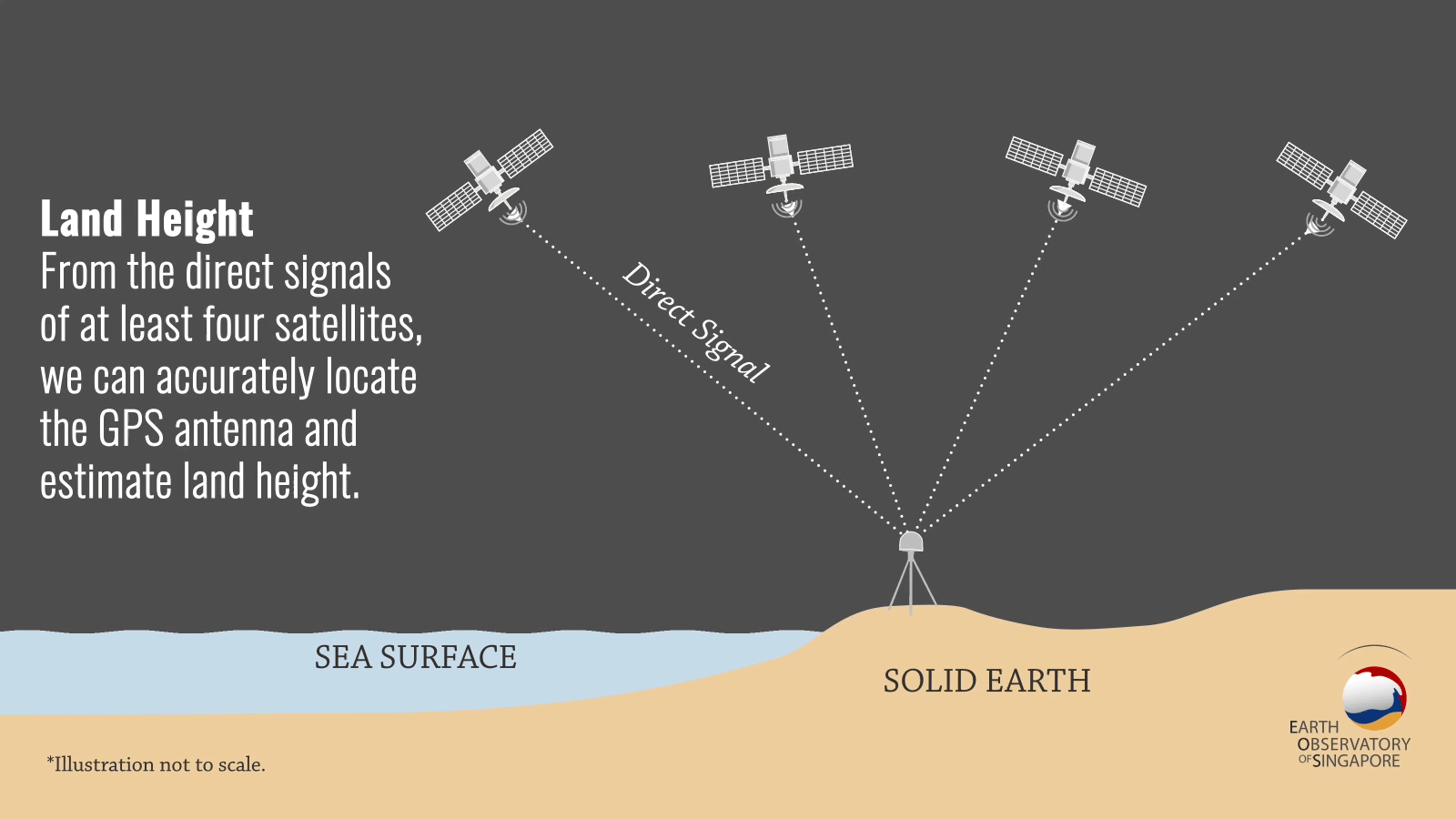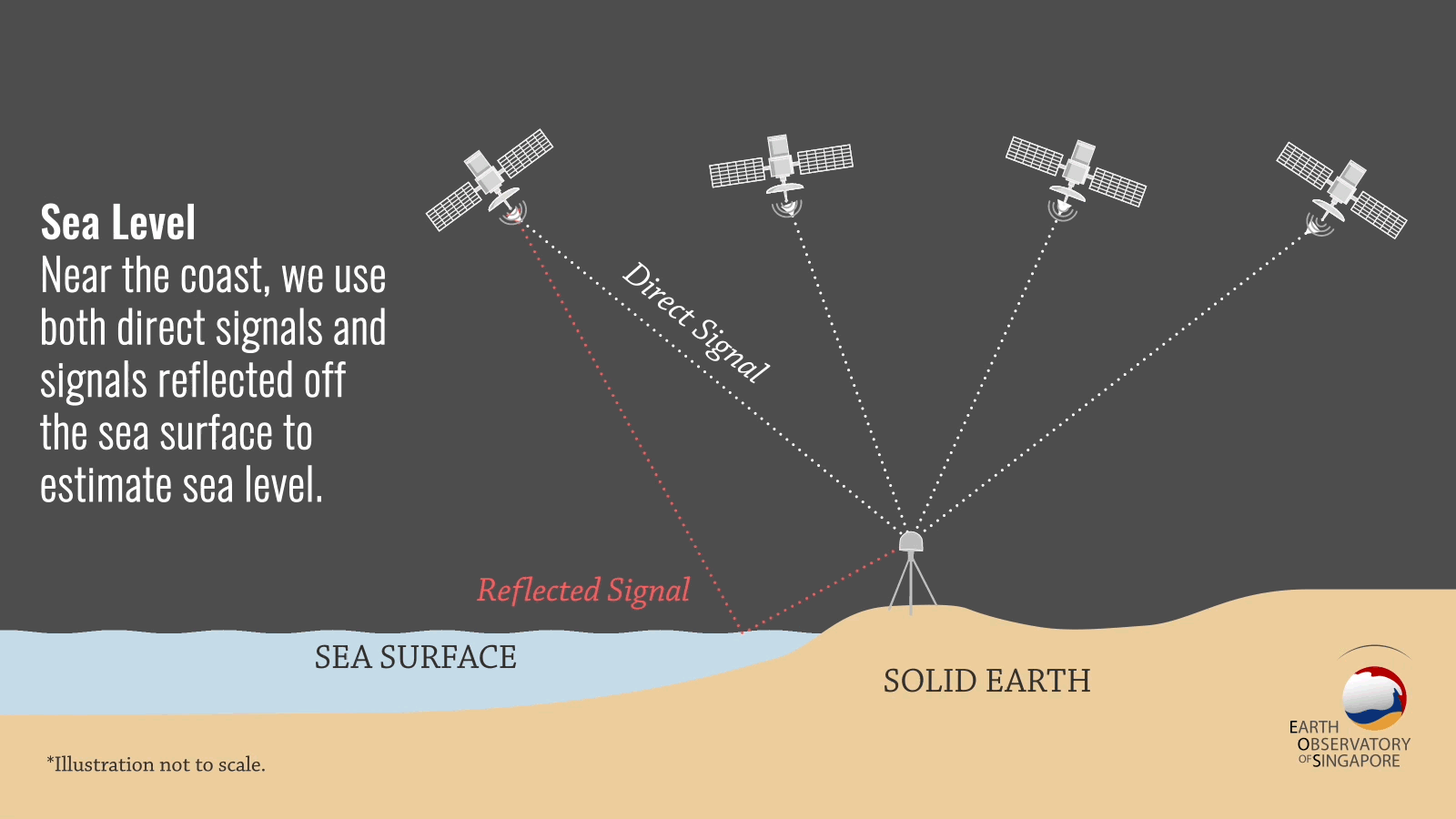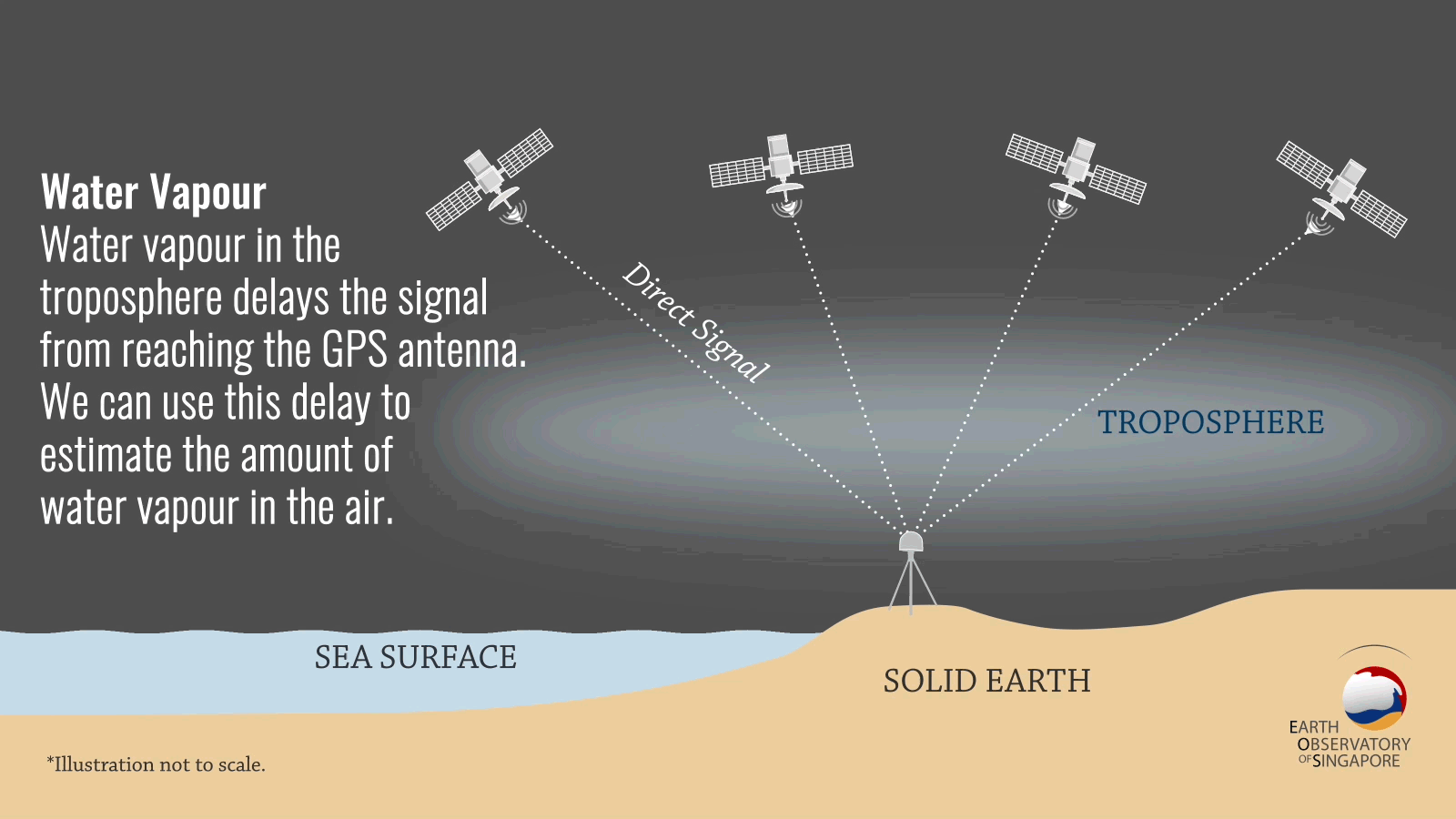You probably know that GPS can be used for location and navigation services. But did you know that GPS can also be used to measure sea-level rise, monitor earthquakes, and detect tsunamis?
There’s a lot that the GPS can measure, and here are some examples:
Land Height
If GPS receivers are installed on the land surface, positioning data can be used to obtain land height measurements.

Measuring changes in land height (Source: Nguyen Thi Nam Phuong/Earth Observatory of Singapore)
Sea Level
Signals from GPS satellite may be reflected off nearby surfaces before reaching the receiver. These reflected signals can be used to estimate the surface’s position.

Measuring changes in sea level (Source: Nguyen Thi Nam Phuong/Earth Observatory of Singapore)
For example, signals reflected off the sea surface can be used to measure changes in sea level.
Water Vapour

Measuring the amount of water vapour in the atmosphere (Source: Nguyen Thi Nam Phuong/Earth Observatory of Singapore)
Water vapour is the most abundant greenhouse gas in our atmosphere. It accounts for most of the earth’s greenhouse effect, and is a key variable that can be used in weather and climate monitoring.
Electron Content in the Ionosphere
GPS can even be used to detect the effects of earthquake and tsunamis on the ionosphere! Earthquakes and tsunamis produce acoustic and gravity waves that reach the ionosphere, causing changes in the total electron content of the ionosphere — something that GPS can measure.
When GPS signals pass through the ionosphere, waves of different frequencies travel at different velocities. By calculating the difference between two frequencies, scientists can use GPS to measure the electron content in the ionosphere.